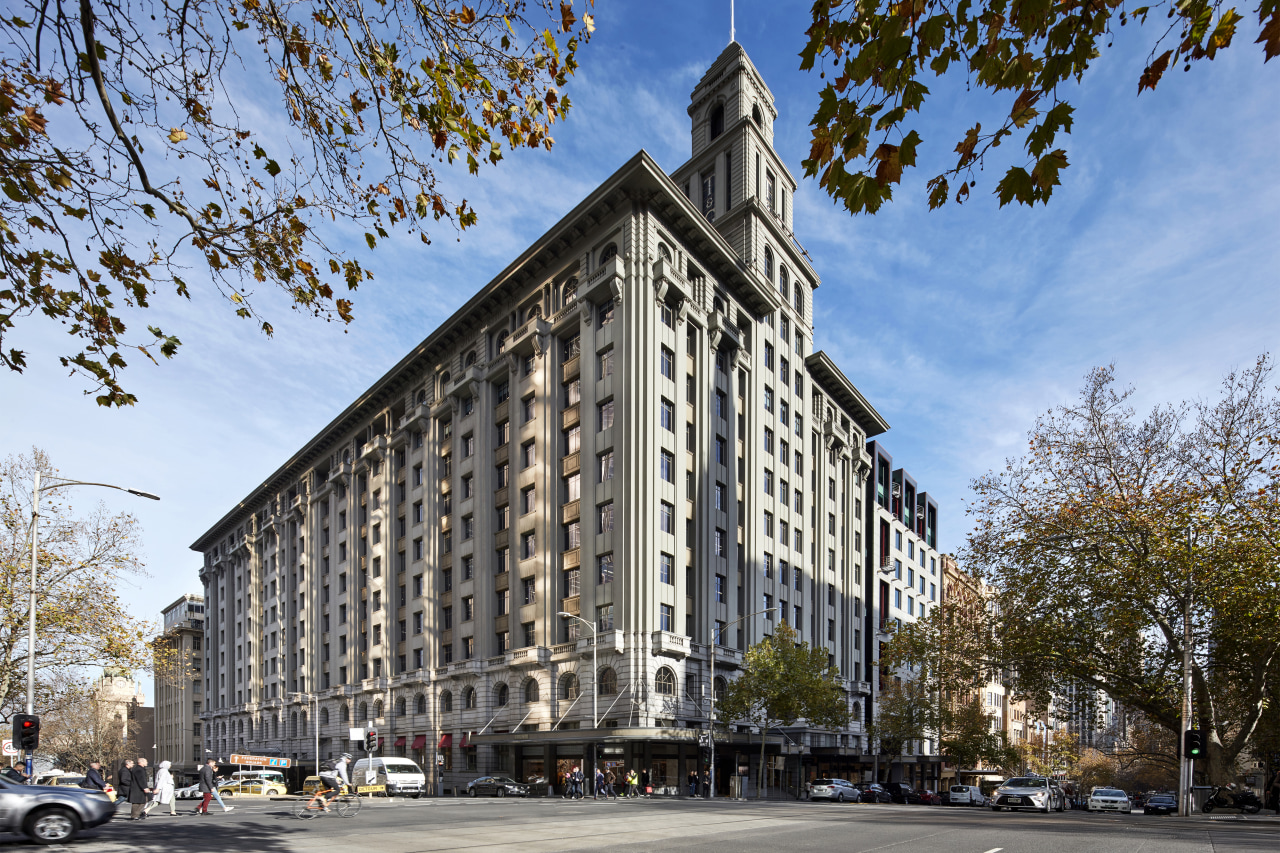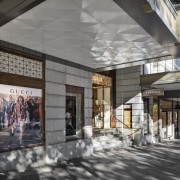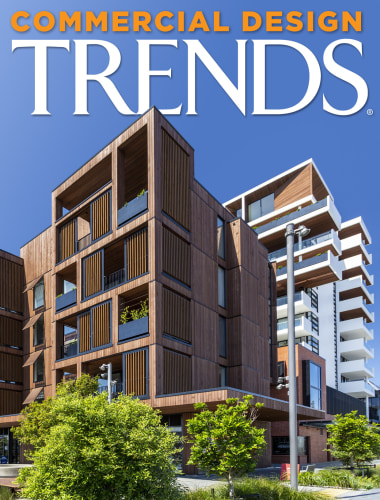Reinvention of Melbourne’s T&G Building improves pedestrian flow and experience
A thoughtful makeover of iconic T&G Building brings improved entries and laneway connections and a completely transformed atrium at its heart
Narrow laneways alive with boutique shops and packed cafes are now a major attraction in mature cities such as Melbourne. However, it hasn’t always been that way. Even today, fresh architectural moves, as with the renovation and activation of that city’s iconic T&G Building, unlock key connections to quintessential laneway culture.
The sensitive T&G Building makeover was undertaken by architectural firm Bates Smart and developed by international real estate advisor Pembroke. The project has dramatically reactivated the 1928 building – which was expanded on down the years – along with its 1993 Post Modern connected building on Collins Street. The latter had doubled the size of the original T&G floorplates to around 4000m² – massive floorplates then and now. The current project has opened up a rear, more relaxed connection through to Flinders Lane, one of the most famous reinvented service lanes in the Hoddle Grid that defines downtown Melbourne.
Between one entry and the other, the internal walkway now offers a rich visual experience and includes a transformative makeover of the central atrium, which was also introduced as part of the early 1990s addition. The light-filled atrium has been transformed from a seatless, gloomy through-space, into a place to linger, lunch or shop.
Above this, the expansive 4000m² office floors have been refreshed, including a significant services review and strengthening the interior architectural links between the 1920s and 1990s building. Plus, an end of journey bike facility has been added.
The reconsidered high-profile building has been embraced by the city and some big names in retail. Now 100 per cent leased, new brands to the fold including Google and co-working group Spaces, who join longer term tenants VMIA, Accenture and IOOF in the refreshed office floors. The most recent addition is Treasury Wine Estates, a global wine company which has taken two levels.
advertisement
Pembroke’s vice president and head of Australia Matthew Knight says Pembroke is incredibly proud of what it has achieved for the T&G Building.
“Our goal was to deliver more than simply a workplace. As an international real estate business we’ve drawn upon our team’s global expertise and combined that with the in-depth local knowledge of Bates Smart to create a sophisticated offering.
“The T&G Building blends diverse retail and F&B with premium workspace to create an enhanced experience for tenants and their guests,” says Knight. “Now more than just a workspace, it’s a thoughtfully curated business community.”
Joining the office tenants is a mix of luxury retail including Versace, Gucci and Bottega Veneta’s flagship stores, and onsite food and beverage offerings.
Tim Leslie, studio director at Bates Smart says their response to the T&G Building was respectful of the site’s century-old heritage, while reimagining the building with contemporary interventions.
“We applied a people-centred approach to make the building more relevant for the current tenants and what they expect from a modern workplace – including introducing high-end support facilities, while maintaining the expansive floorplates.”
Leslie also introduced architectural detailing in the 1990s building to bring the refined, traditional feel across from the interiors in the 1920s building.
However, for those now using the building at ground level, the pedestrian experience has been comprehensively changed.
“We created a range of curated experiences along the public north-south pedestrian spine and including the reworked central atrium, which now offers an atmospheric oasis for people to gather, relax and engage in.”
On the more formal entrance on Collins Street, large, dark columns had previously contributed to a gloomy uninviting atmosphere. Bates Smart replaced the load-bearing columns with a structural transfer beam, clearing the way for a generous glass, welcoming entry complete with glamorous revolving door and a clear line of sight into the heart of the building. A disability access was also added.
Drawn on by the attraction of lightness, giant artworks on walls and a high patterned ceiling, pedestrians arrive at the now reinvented atrium.
“Previously, sky bridges had crimped the sense of spaciousness in the building-height atrium and glass elevators had a slightly voyeuristic feel. There was lots of cold-looking stone and the place had been uninviting, certainly not a place to linger.
“We removed the sky bridges – opening up the space visually – hid lift entries with a masonry wall and screened out the lift cars rising above with mesh. That last design move meant lift occupants could still look out over the atrium, but were out of sight and mind of the atrium’s occupants.”
The architects also replaced the green, leaded glass in the internal windows overlooking the atrium for a brighter light quality, and the slab edges of the floors were highlighted. This turned the atrium’s overall disengaging vertically stress into a more horizontal one – again for a more human scale feel.
Plus the atrium’s cold, hard surfaces were replaced with wood and mosaic elements and a variety of seating where there had been none before. In addition, a large see-through, rope-like sculptural partition brought at once a sense of cosy enclosure and an appreciation of the wider space.
From the atrium, the internal link continues down stairs to the Ramsden Place entrance, with its steel entry door, and by extension out to Flinders Lane. Complex reworkings of traffic – such as minimising loading dock activity from Flinders Lane and moving the T&G parking entrance from Flinders Lane to Russell Street – engender activity and easy connections here. The bike facilities, showers included, are located at this less-formal entrance.
The two entries – one large, bright and formal and the other decidedly informal – also correspond to the nature of their retail and hospitality offerings.
On Collins Street, the rich heritage frontage is the ideal setting for luxury brands that seek to gain leverage off their august environment. On Flinders Lane, retail options are more boutique and quirky, a look reflected in the Ramsden Place entry. One inner-city address and two quite different entrances with distinct personalties is a pretty neat trick.
Credit list
Project
Developer
Mechanical and electrical engineer, fire consultant
Landscaping
Internal glazing
Exterior paving
Paints
Veneers
Security
Lift
Architect and interior designer
Construction
Quantity surveyor
Internal atrium cladding
General flooring
Wall treatments
General area ceiling panels
Lighting
Signage
Escalator services
Story by: Charles Moxham
Photography by: Peter Clarke
Home kitchen bathroom commercial design
Open to view
Charismatic and connected
Modernising without erasing character
Commercial Design Trends Vol. 34/3C
While apartment living has always been prevalent in some cities, there are others where it is still a developing accommo...
Read Moreadvertisement
advertisement
advertisement
advertisement
advertisement
advertisement
advertisement

















